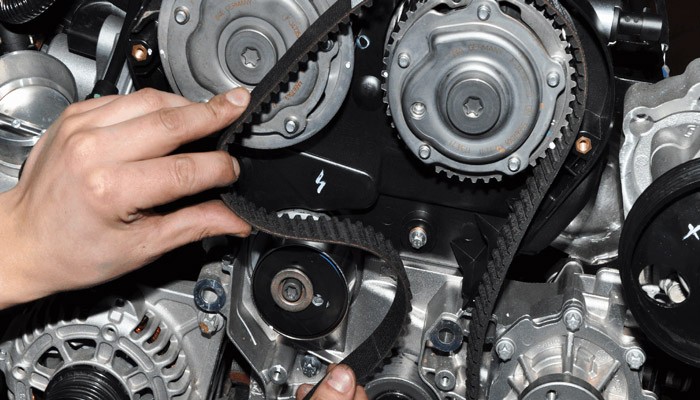
Why Timing Belt Replacement Can Be Difficult
Content
Timing belt replacement methods differ depending on the belt type. Service and maintenance should be carried out in accordance with the manufacturer's recommendations.
Most cars and light trucks are equipped with timing belts. Transverse engines, known as front wheel drive, can be tricky to remove and replace the timing belt.
There are three types of timing belts
- Timing belt with single overhead camshaft
- Timing with two overhead camshafts
- Double toothed belt with two overhead camshafts
Timing belt with single overhead camshaft
Replacing a single overhead cam timing belt can be a daunting task. Some vehicles have brackets, pulleys, or coolant hoses in front of the timing cover. Keeping the camshaft and crankshaft in line is fairly easy when replacing the timing belt.
Timing with two overhead camshafts
Double overhead cam timing belts can also be tricky. Most cars on the market today have a cylinder head design in which the valve train enters the combustion chamber at an angle of forty to eighty degrees. This is very important when removing the timing belt due to the alignment of the valve train. When the timing belt is removed on a double overhead camshaft, both camshafts are preloaded with springs. One camshaft may have a shaft load, causing the camshaft to remain in place while the belt is removed. However, there will be no load on the other camshaft and the shaft will rotate under spring pressure. This can cause the valve to come into contact with the piston, causing the valve to bend.
To prevent the camshaft from rotating when the timing belt is removed, a cam locking tool must be used. The cam lock tool locks both camshafts and holds them together from rotating.
Double toothed belt with two overhead camshafts
The most difficult type of timing belt replacement, and can be very difficult to perform, is the double overhead cam timing belt. This type of belt is a single belt used on av configuration engines with dual camshaft heads. Most overhead timing V-6 engines can have this type of belt. When replacing this type of belt, it is important to have two cam locking tools as there are two sets of cylinder heads on the engine.
On transverse engines, the timing belt can be difficult to remove due to the limited space to access the belt. On some vehicles it is easier to remove the belt from the top of the engine, but on most vehicles the wheel and tire assembly must be removed with the inner fender if it is bolted on to gain access to the lower cover bolts. timing cover. Most timing covers are now a one-piece piece, resulting in the removal of the harmonic balancer located on the crankshaft.
On some engines, the engine mounts interfere with the removal of the timing belt and make it difficult to remove the belt. In this case, supporting the engine and preventing it from moving will help with the removal and installation of engine mounts, commonly known as dog bones.
Timing belts must be replaced in accordance with the manufacturer's recommendations. Changing the timing belt earlier than usual is possible, but not recommended.
- Attention: If the timing belt is broken, be sure to check the engine to determine if it is a noisy or noisy engine. Also, adjust the timing, install a new belt, and perform a leak test to make sure the engine is actually fit for normal operation. AvtoTachki has timing belt replacement services.

